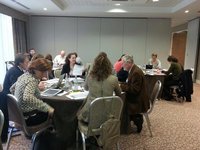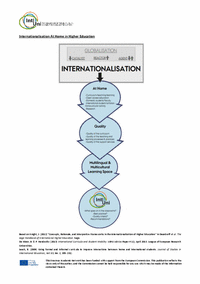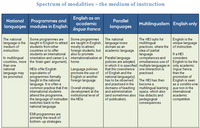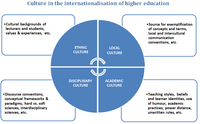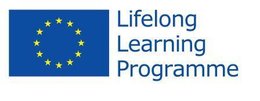Results of WP2-3: Getting Down to Business at the 3rd All Partner Meeting in Colchester
One year into the project and six months after the 2nd All Partner Meeting in Warsaw, the University of Essex in Colchester, England provided the venue for IntlUni’s 3rd All Partner Meeting. The goal of the meeting chaired by Project Coordinator Karen M. Lauridsen was to finalise the project outcomes for WP2-3, i.e. the identification of pertinent HEI scenarios and their concomitant linguistic, cultural and pedagogical/didactic challenges.
2013.12.09 |
Having already presented their results in Warsaw from the European-wide quantitative survey undertaken among the partner universities, our four WP leaders – Sharon Millar and Margot van Mulken (WP2); Alessia Cogo and Kirsi Westerholm (WP3) – were now ready to put forward for further discussion and validation the outcomes of the follow-up interviews undertaken by the partners. This November 2014 all-partner meeting in Colchester thus marks a crucial phase, both in terms of the results of WP2-3 that are to be uploaded as project outcomes on the IntlUni website in December as well as in preparing the ground for the transition to WP4, which will focus on the identification of examples of successful practice and quality criteria in participating HEIs in the EHEA.
With a view to the complexity of the task ahead, and with the Management Committee having already convened in the afternoon on the 5th November, it was a wise decision on Karen’s part to devote all three sessions on the 6th to a meeting of the Management Committee together with the Work Package Leaders. We thus had ample time to discuss the outcome documents circulated prior to the meeting, the precise form the presentation of the results should take as well as their validity and general applicability. These would then be tested further in the actual All Partner Meeting on the 7th, before going online in early December.
As the meeting of the MC and WPLs again made clear, what has emerged from IntlUni’s quantitative survey and the follow-up interview narratives has been the sheer range of MMLS scenarios produced by the 39 participating HEIs in Europe and beyond. Such diversity, it was concluded, does not easily lend itself to establishing a fully differentiated typology of scenarios, but it does reflect one of Europe’s key assets, namely its linguistic and cultural heterogeneity.
Such inherent complexity notwithstanding, Sharon and Margot were nonetheless able in their WP2 synthesis report to draw some very useful conclusions about levels of internationalisation at the participating HEIs in terms of policy, volume, language(s) of instruction and support mechanisms. As was emphasized in the ensuing discussions, this was also an awareness raising exercise, with many respondents having noted that their HEIs did not as yet have a clear view of how they envision and practice internationalisation. It was apparent that while globalisation and excellence are now trending policy topics, often identified with a top-down hierarchal approach, existing internationalisation infrastructure is more likely a product of inherently more fragile, bottom-up strategies, dependent on ad hoc, individual responses to events. With a view to the diversity and complexity of the processes at work in the EHEA, it thus seemed much more reasonable to define a broad set of characteristics that contribute to the internationalisation of any given HEI.
To that end and linking up to the existing, predominantly Anglophone-based research on internationalisation, a five-stage model had been drawn up by Margot and Sharon. As they both argued in response to Thomas Vogel’s intervention during our discussions, although “not purely descriptive” the model should not be construed as putting forward binding “recommendations” but rather as an “eye opener for institutions without a clear language policy” since it is based on findings that represent a “snapshot of ongoing processes” in the EHEA. It was also important to note that these findings were “representative [only] of the partner institutions” (Carmen Pérez Vidal) and as such the model should function as “a kind of heuristic, where institutions could identify where they were” (Kevin Haines).
As a result of the discussion, a consensus was reached on re-designing the vertically numbered ‘flow chart’ – implying progression towards full internationalisation – into a horizontal “spectrum of modalities” (Peter Stear) with “descriptors” (Carmen Pérez Vidal) pinpointing the different contexts in which HEIs find themselves. As Karen explained, this would foreclose any tendency for stage five – English as the true lingua franca or alternatively multilingualism pur et dur – to be viewed exclusively as the “endpoint of successful internationalisation”, whereas in fact “it was up to individual institutions, schools and faculties to decide what is for them appropriate” at any given point in time and within their own specific context.
In the next session, the MC and WPLs went on to debate the results of WP3, tasked with the identification of linguistic, cultural and pedagogical/didactic challenges. As Alessia and Kirsi noted in the preamble to their synthesis report and despite the overlapping nature of the enterprise, they had been determined “to focus on the linguistic challenges as separate from the cultural and didactic ones in an attempt to make sense of the increasingly complex learning and teaching landscape in HEI contexts”.
Among the many issues identified in the report and addressed in the discussions were the levels of language proficiency in the medium of instruction, student/teacher perceptions thereof and the lack of support regarding courses offered to L2 lecturers.
The cultural issues discussed focussed on the nexus of ethnic, local, academic and disciplinary cultures and practices as represented in the model ‘Culture in the Internationalisation of HE’. This included such aspects as the teacher/student not sharing the same understanding of the academic context, international students’ attitudes being influenced by financial constraints, and a perceived lack of motivation on the part of some students regarding integrating with host country students. One conclusion regarding the pedagogical/didactic challenges was that teachers did not necessarily need support with foreign language skills, but rather needed training in multicultural teaching skills, i.e. in identifying the specific didactic approach best suited to guaranteeing learning outcomes when the working language is not one’s own language.
The third and final session was devoted to scrutinising and finalising the ‘IntlUni catalogue of challenges in the MMLS’. The draft grid – including a column on successful practices and thus marking the transition to WP4 – was then tested in preparation for the All Partner Meeting on Thursday. Karen concluded a very productive day for the MC and WPLs with an overview of upcoming dissemination activities and preparations for the Copenhagen and Lausanne meetings in 2014.
After the formal opening of the 3rd All Partner Meeting on Thursday, the 40+ partner representatives present were given a status overview of the project at the end of the first year. As stated above, the main tasks that followed were for the partners to validate the grid by using the interview narratives and, as a next stage, to elicit and identify from these examples of successful practice. Comments from the partners in the plenary feedback sessions included the following: “The narratives are wonderful for research.” “The whole exercise is becoming much more concrete.” One proviso was that some of the categories did not “cater to distance learning”, in other words “address the virtual situation”. Overall a very successful first year for the IntlUni project.
Please see the website for more information about IntlUni and the recent project outcomes.


